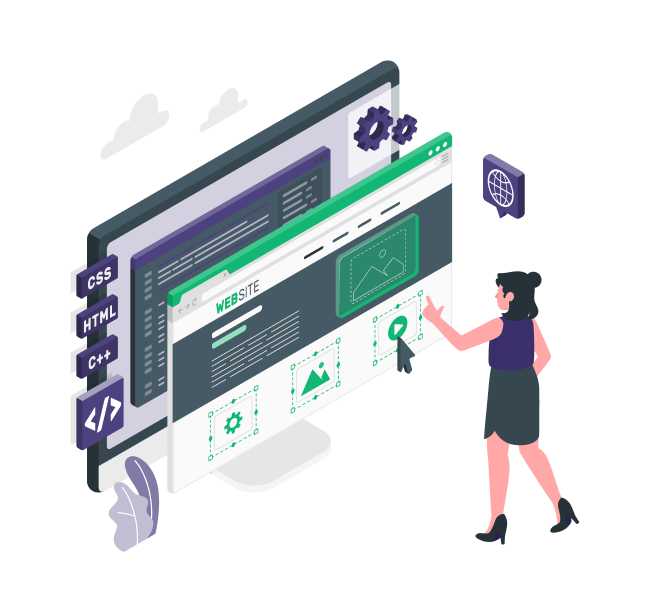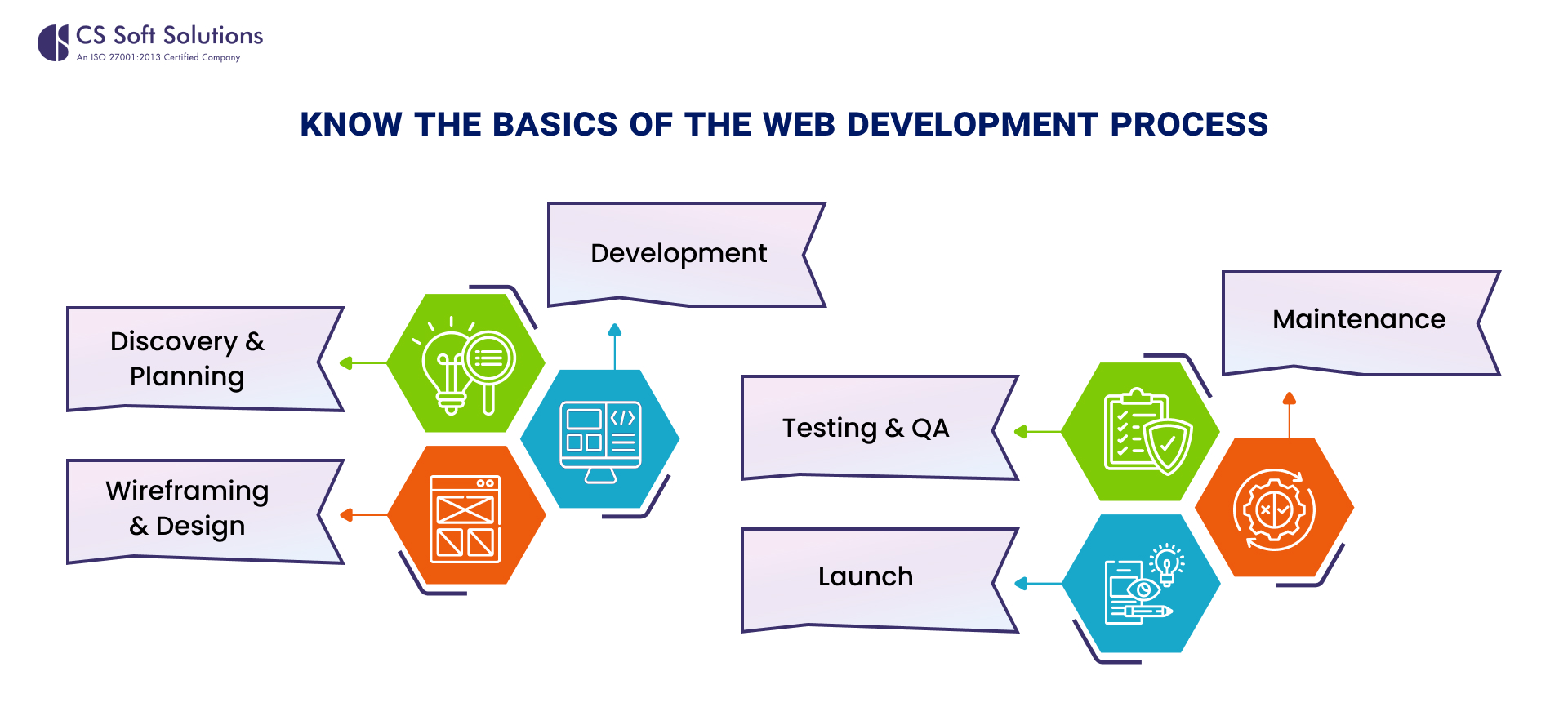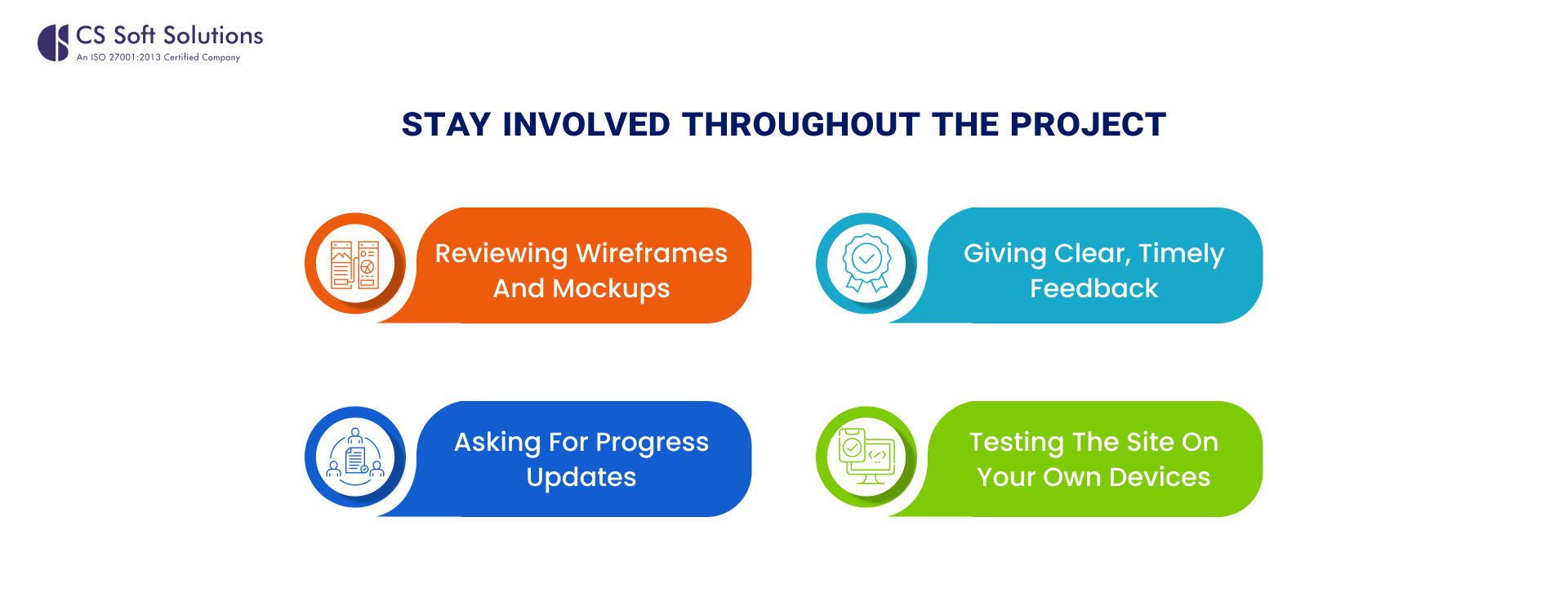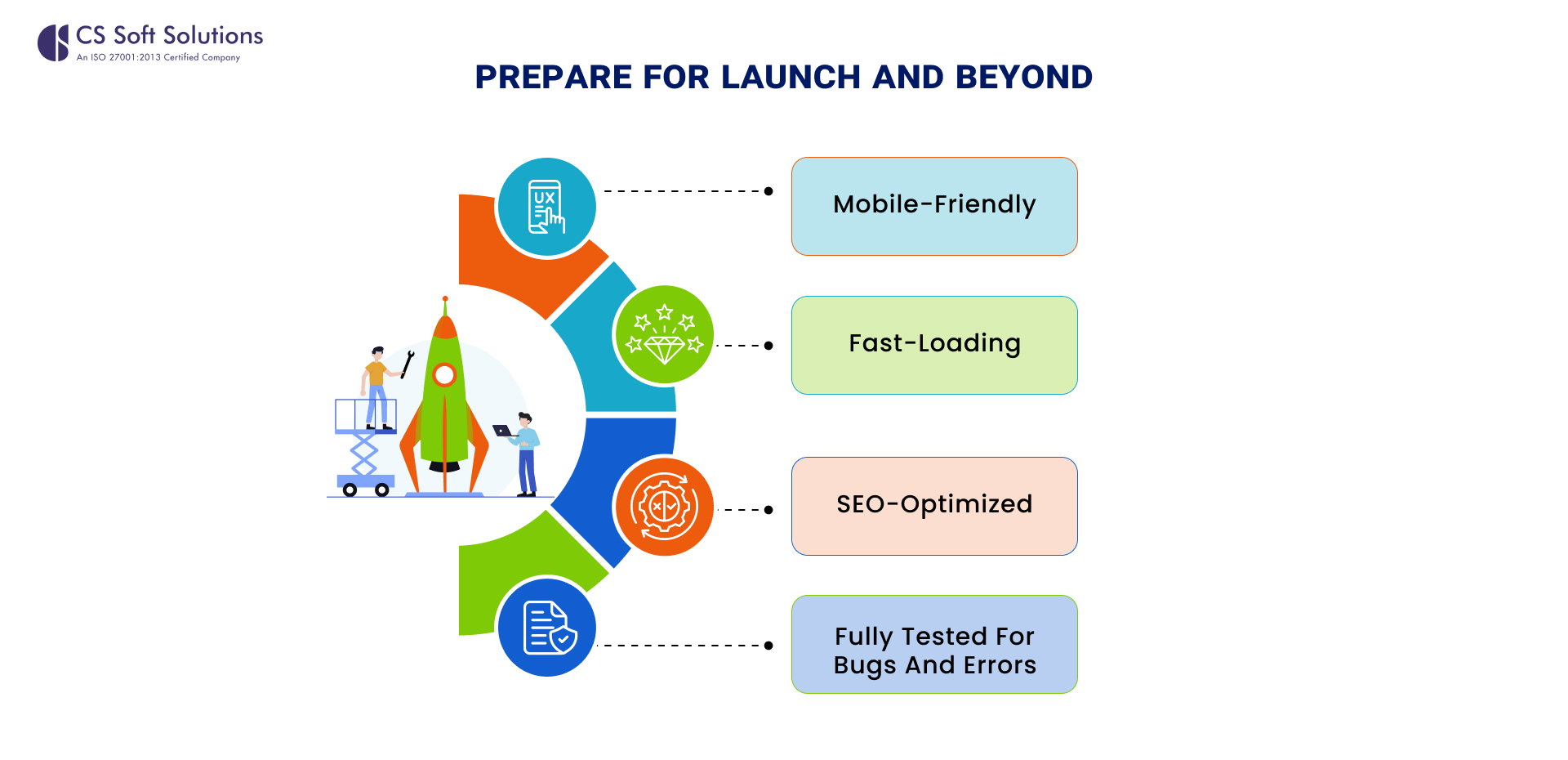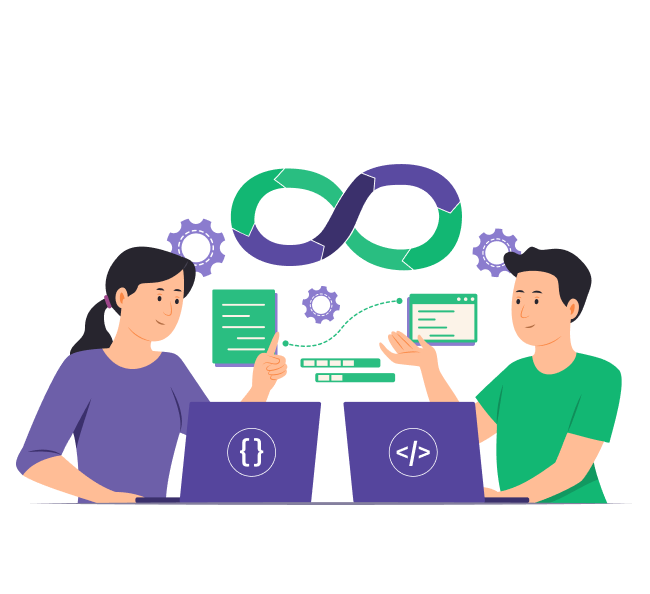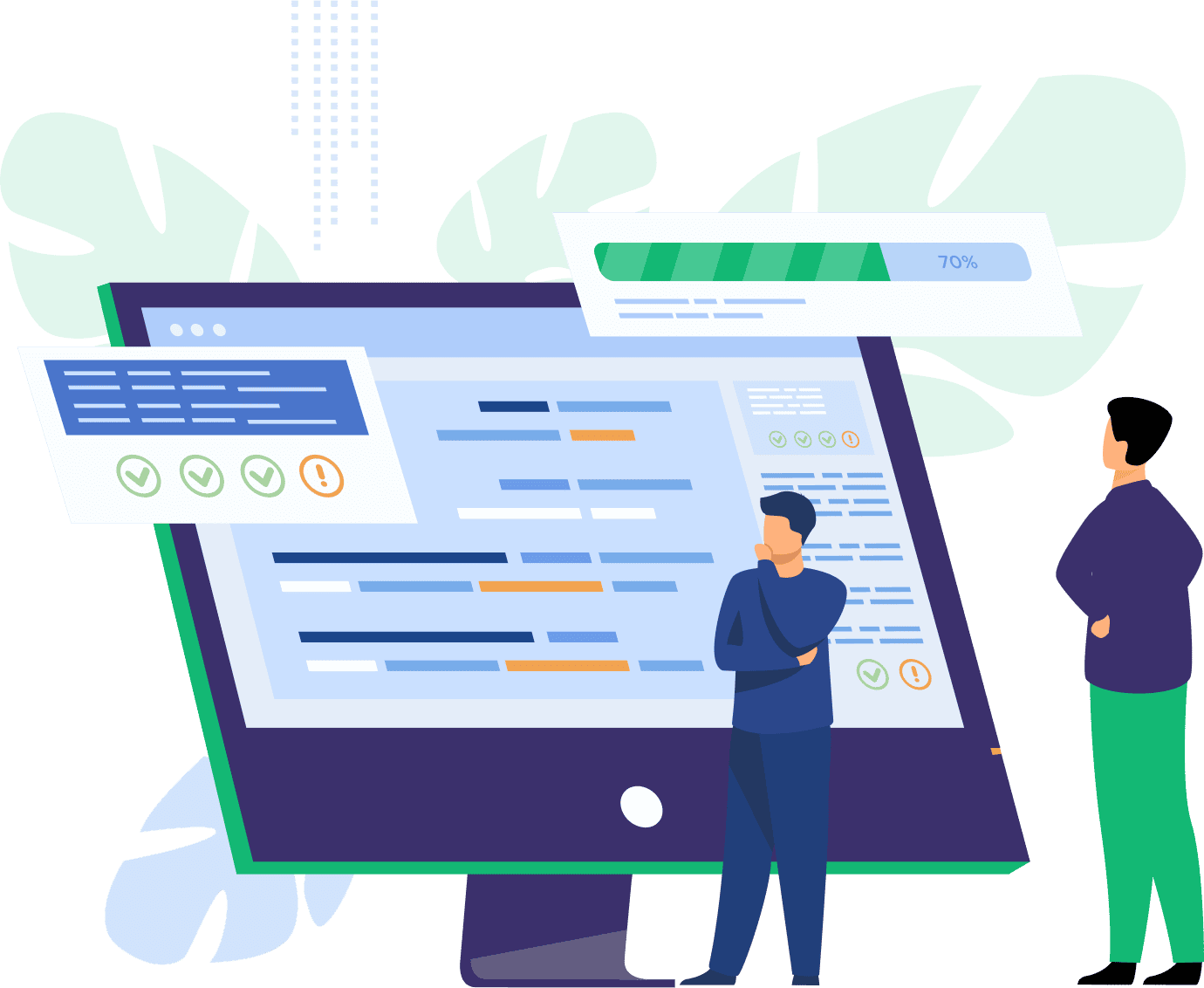In today’s fast-paced digital domain, the single most important offering for your brand is that first impression moment between the customer and your website. Whether you are setting up a new website or redesigning one, choosing the right agency for the design and development of your website is a decision you cannot afford to take lightly; it dictates brand perception by users, and conversion rates and is also an important ranking factor for SEO.
But how would you go about judging and finalizing your web development partner? From the point of planning out your needs to sealing the deal, we put each step in our step-by-step guide.
Step 1: Define Your Website Goals
In short, even before you begin canvassing representatives for website design and development services, you want to get very clear on what your objectives are. Ask yourself:
- What needs to be done?
- Is it lead generation or sales?
- Are you looking to run an e-commerce platform?
- Building an online community?
- Is it showing them some great stuff from your portfolio?
- What kind of people are you expecting?
The clearer you are about the objectives, the easier it will be to choose development services that appeal to your vision.
Step 2: Know the Basics of the Web Development Process
Understanding the stages of the web development process gives you the upper hand during consultations. Here’s a simplified version:
- Discovery & Planning – Set down the project goals, define target audiences, technical requirements, and project schedule.
- Wireframing & Design- UX/UI designers create layout mockups and interactive prototypes to flesh out user flows and functionality.
- Development- Front-end developers realize the design with HTML, CSS, and JavaScript, while back-end developers handle the programmatic implementation, integration, and database concerns on the server.
- Testing & QA- Fix bugs, verify browser compatibility, test performance, and make sure that the responsive design works on a wide range of devices.
- Launch- Having secured thorough client approval and the pre-launch checklist, monumental websites have gone live on a server.
- Maintenance- Ongoing services consisting of content updates, software/plugin updates, backup, availability monitoring, and security patching.
This framework lets you know what you are paying for and what you can expect in each phase.
Step 3- Set a Realistic Budget
Budget forms a large factor, but it should not be the only element you consider. As custom websites vary in price according to complexity, timeline, and scope, here is a generic breakdown:
- Basic websites: $500 to $2,000- Ideal for an individual or small business requiring a simple brochure site.
- Small business websites: $2,000 to $10,000-Greater features, branding integration, and custom design included.
- E-commerce or large-scale websites: $10,000-The solution domain is for something complex like online stores, memberships, integrations, and data on an enterprise scale.
Avoid the temptation of the cheapest option. It often leads to sloppy work, poor SEO, and limited support. Instead, focus on the value of what you get for the price.
Step 4: Research Website Design and Development Services
Now it’s time to explore your options. Use these tactics to find credible providers:
- Google and Clutch.co: Search engines and verified B2B directories offer ranked lists and genuine reviews.
- Behance and Dribble: Design-centric platforms showcasing creative portfolios from freelance designers and agencies.
- LinkedIn: Check profiles of agencies or freelancers for credentials, experience, and endorsements.
- Referrals: Word-of-mouth recommendations from friends, colleagues, or business groups are often the most reliable.
While reviewing agencies or freelancers, look at:
- Portfolio quality and diversity: a solid mix of industries and project types indicates adaptability and flair.
- Client testimonials or case studies: insight into project outcomes, timeline, and communication style.
- Industry or CMS specialization: Are they experienced in the kind of work you want done (for instance, WordPress, Shopify, Magento, or Webflow)?
Step 5: Interview and Evaluate Prospects
Do not skip this step. Treat it like hiring an employee. Prepare a list of key questions:
- Can you walk me through your web development process? Understanding their workflow can reveal gaps or strengths.
- Who is going to be working on my project? Find out whether it is a team or a solo freelancer and clarify roles.
- What CMS or technologies are you specialized in? Compatibility with your chosen platforms will help ease the collaboration.
- How do you handle communication and project updates? A structured communication plan is vital to stay on track.
- What’s your timeline and revision policy? Know how flexible they are with changes and project deadlines.
Estimate their responsiveness, clarity, and willingness to educate. These traits matter just as much as technical skills.
Step 6: Request Proposals and Compare
Ask your top picks to submit proposals outlining:
- Scope of work: Detailed breakdown of services included in the project.
- Project timeline: Estimated phases, milestones, and final delivery date.
- Deliverables: What files, content, or assets do you receive upon project completion?
- Cost breakdown: Clear separation of design, development, hosting, maintenance, and any third-party fees.
- Maintenance or post-launch support: Information on bug fixes, updates, and emergency support post-launch.
Don’t just look at the price. Compare each proposal based on clarity, strategy, and whether they understand your business goals.
Step 7: Review Contracts Carefully
A professional website development service will always provide a contract. Read it in full, especially these sections:
- Payment terms and milestones: Understand the deposit, installments, and final payment requirements.
- Ownership of design and code: Make sure you retain full rights to your website content and source files.
- NDA or confidentiality clauses: Important if you’re sharing proprietary or sensitive business information.
- Post-launch support agreement: Check what kind of maintenance or troubleshooting they offer after going live.
- Termination conditions: Know the rules for canceling the contract or stopping work.
Step 8: Stay Involved Throughout the Project
Even after signing the contract, your work isn’t over. Stay engaged by:
- Reviewing wireframes and mockups: Give feedback early to avoid expensive changes later.
- Giving clear, timely feedback: Keep communication lines open to stay aligned with project goals.
- Asking for progress updates: Set regular check-ins or status calls to monitor timelines.
- Testing the site on your own devices: Catch usability issues or design flaws from your target audience’s perspective.
The best web development services welcome collaboration. Your insights as a business owner are essential.
Step 9: Prepare for Launch and Beyond
Before going live, make sure the website is:
- Mobile-friendly: Test responsiveness across smartphones and tablets.
- Fast loading: Optimize image sizes, code, and caching to improve site speed.
- SEO-optimized: Ensure meta titles, descriptions, headings, and URLs follow SEO best practices.
- Fully tested for bugs and errors: Check contact forms, checkout processes, navigation, and media displays.
After launch, ask about ongoing maintenance options. Good web development services offer packages that cover backups, plugin updates, and troubleshooting.
Bonus Tip: Red Flags to Watch Out For
Not every provider offering website design and development services will be the right fit. Be cautious if you notice:
- Lack of transparency: Vague contracts or unclear communication is a warning sign.
- Too-good-to-be-true pricing: Rock-bottom prices often lead to subpar results or hidden costs.
- Overuse of templates: Some developers may offer generic, recycled layouts with little customization.
- No clear process: A reliable provider should walk you through their approach step by step.
Always trust your instincts and ask questions when in doubt.
Final Thoughts
Partnering with the right web design and development services provider like CS Soft Solutions India Pvt. Ltd. is about finding one who understands your goals, communicates clearly, and delivers consistently. It is not about hiring the one with the most bling in the portfolio or the affordable quotation.
Whether a sole proprietor or a growing team, investing funds wisely for the best web development services is among the smartest things you could do to give your business a digital presence.




